While row selection is faster for csr than for col selection, the difference is not big:
In [288]: Mbig=sparse.rand(1000,1000,.1, 'csr')
In [289]: Mbig[:1000:50,:]
Out[289]:
<20x1000 sparse matrix of type '<class 'numpy.float64'>'
with 2066 stored elements in Compressed Sparse Row format>
In [290]: timeit Mbig[:1000:50,:]
1000 loops, best of 3: 1.53 ms per loop
In [291]: timeit Mbig[:,:1000:50]
100 loops, best of 3: 2.04 ms per loop
In [292]: Mbig=sparse.rand(1000,1000,.1, 'csc')
In [293]: timeit Mbig[:1000:50,:]
100 loops, best of 3: 2.16 ms per loop
In [294]: timeit Mbig[:,:1000:50]
1000 loops, best of 3: 1.65 ms per loop
It isn't worth it to switch format
In [295]: timeit Mbig.tocsr()[:1000:50,:]
...
100 loops, best of 3: 2.46 ms per loop
Contrast this with the same slice for the dense version:
In [297]: A=Mbig.A
In [298]: timeit A[:,:1000:50]
...
1000000 loops, best of 3: 557 ns per loop
In [301]: timeit A[:,:1000:50].copy()
...
10000 loops, best of 3: 52.5 µs per loop
To complicate the comparison, indexing with an array (numpy advanced) is actually faster than with the 'slice':
In [308]: idx=np.r_[0:1000:50] # expand slice into array
In [309]: timeit Mbig[idx,:]
1000 loops, best of 3: 1.49 ms per loop
In [310]: timeit Mbig[:,idx]
1000 loops, best of 3: 513 µs per loop
Here the column indexing of a csc has a greater speed improvement.
And single row or column, csr and csc have getrow/col methods:
In [314]: timeit Mbig.getrow(500)
1000 loops, best of 3: 434 µs per loop
In [315]: timeit Mbig.getcol(500) # 1 column from csc is fastest
10000 loops, best of 3: 78.7 µs per loop
In [316]: timeit Mbig[500,:]
1000 loops, best of 3: 505 µs per loop
In [317]: timeit Mbig[:,500]
1000 loops, best of 3: 264 µs per loop
In https://stackoverflow.com/a/39500986/901925 I recreated the extractor code that sparse uses to fetch rows or columns. It constructs a new sparse 'vector' of 1s and 0s, and uses matrix multiplication to 'select' rows or columns.
